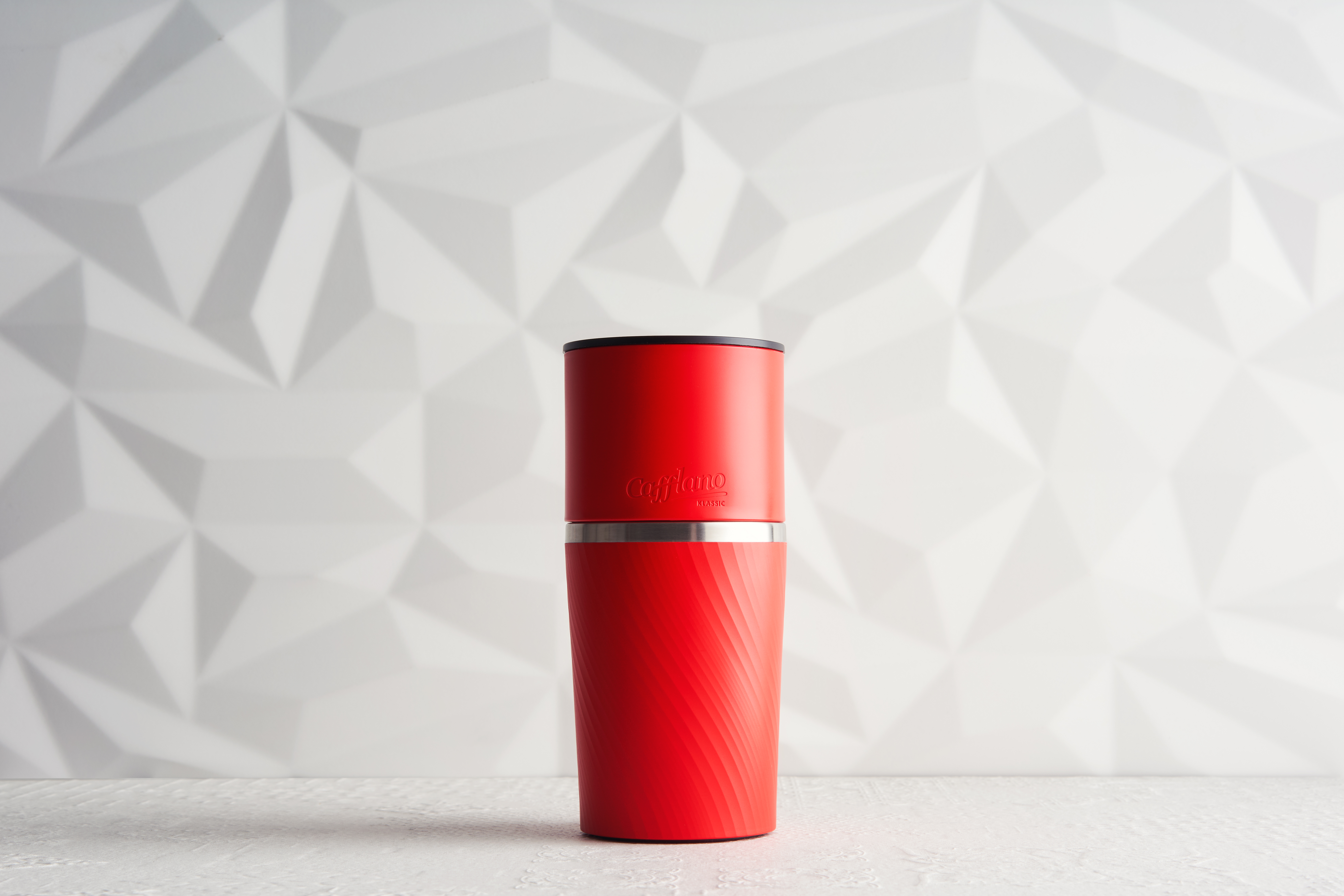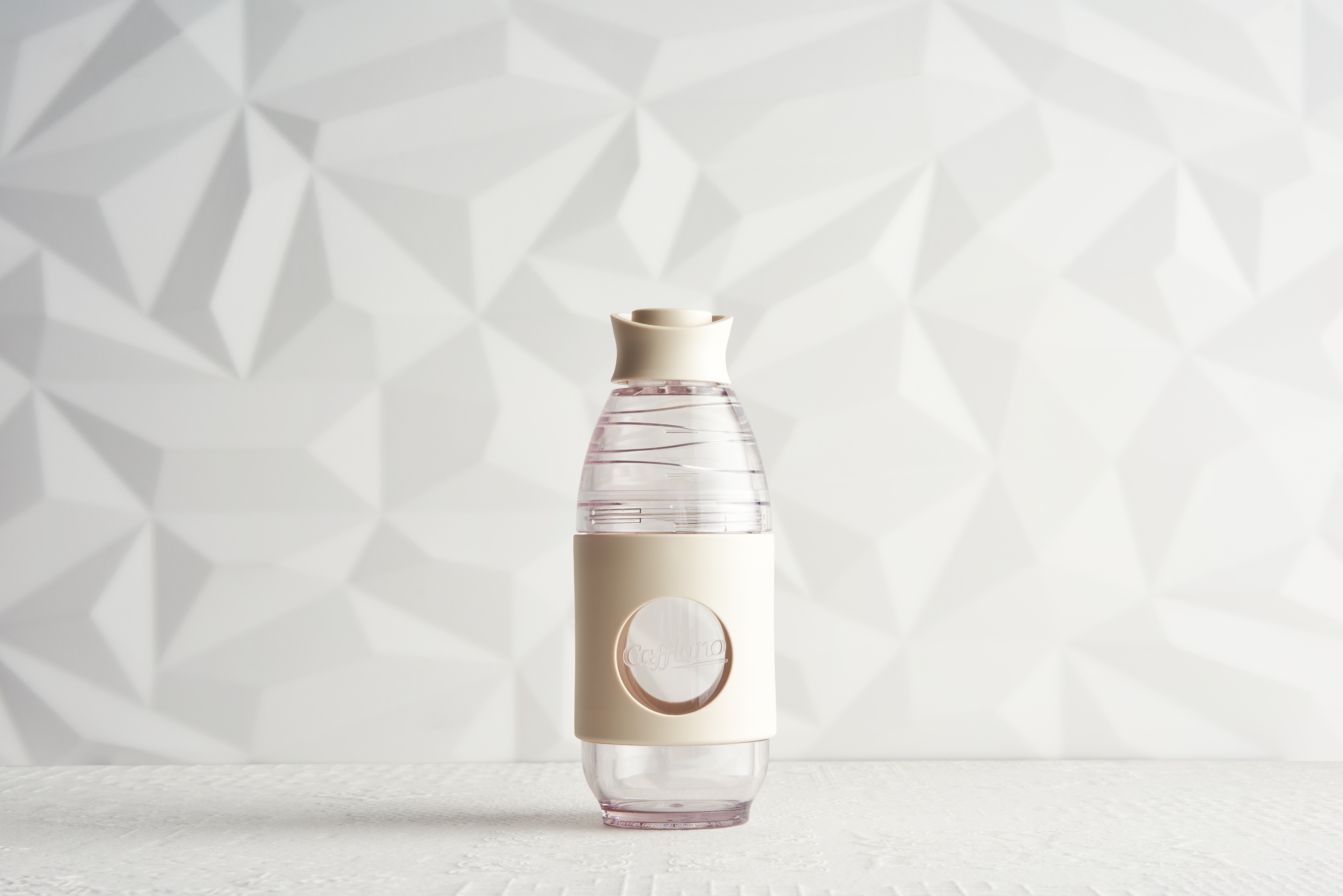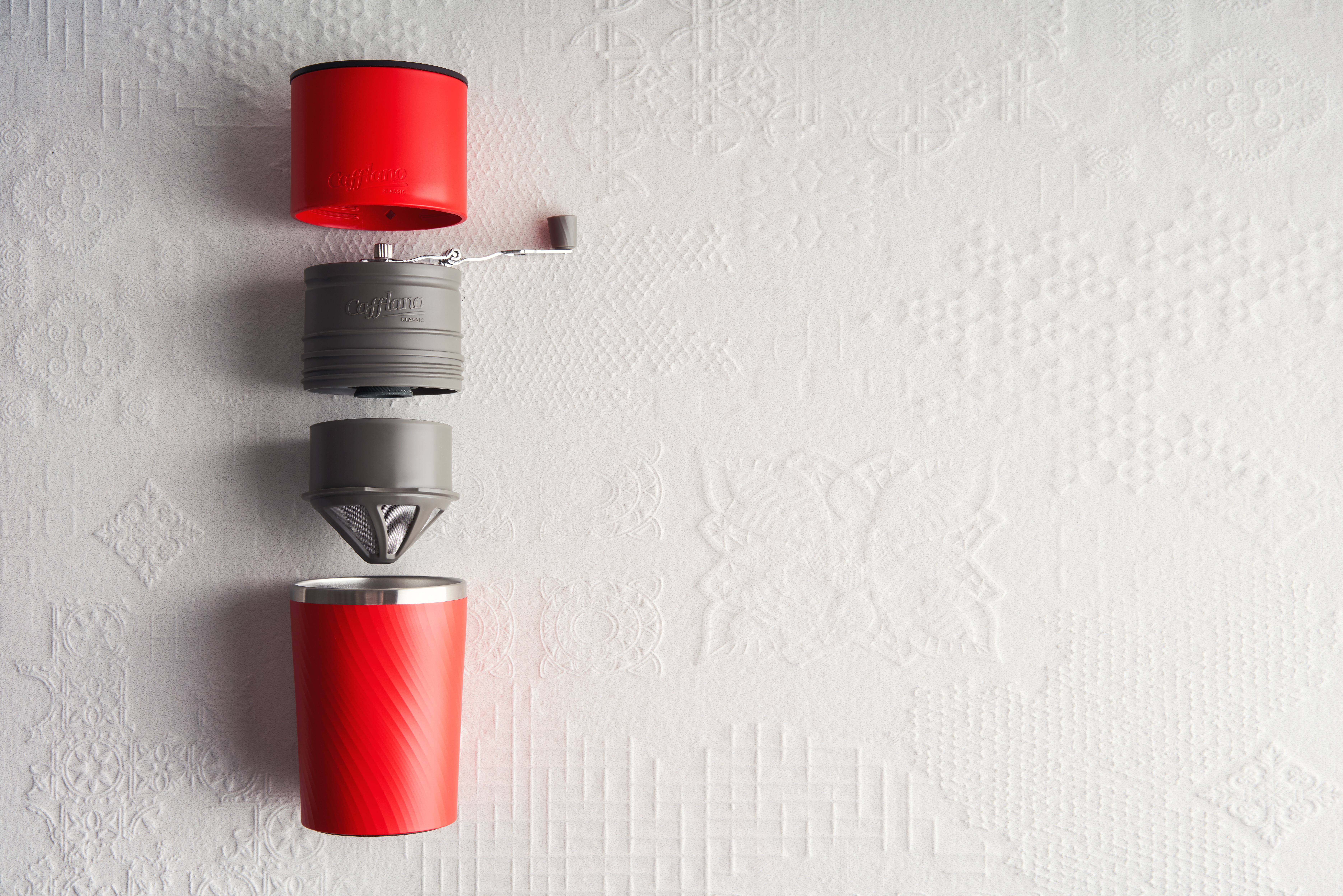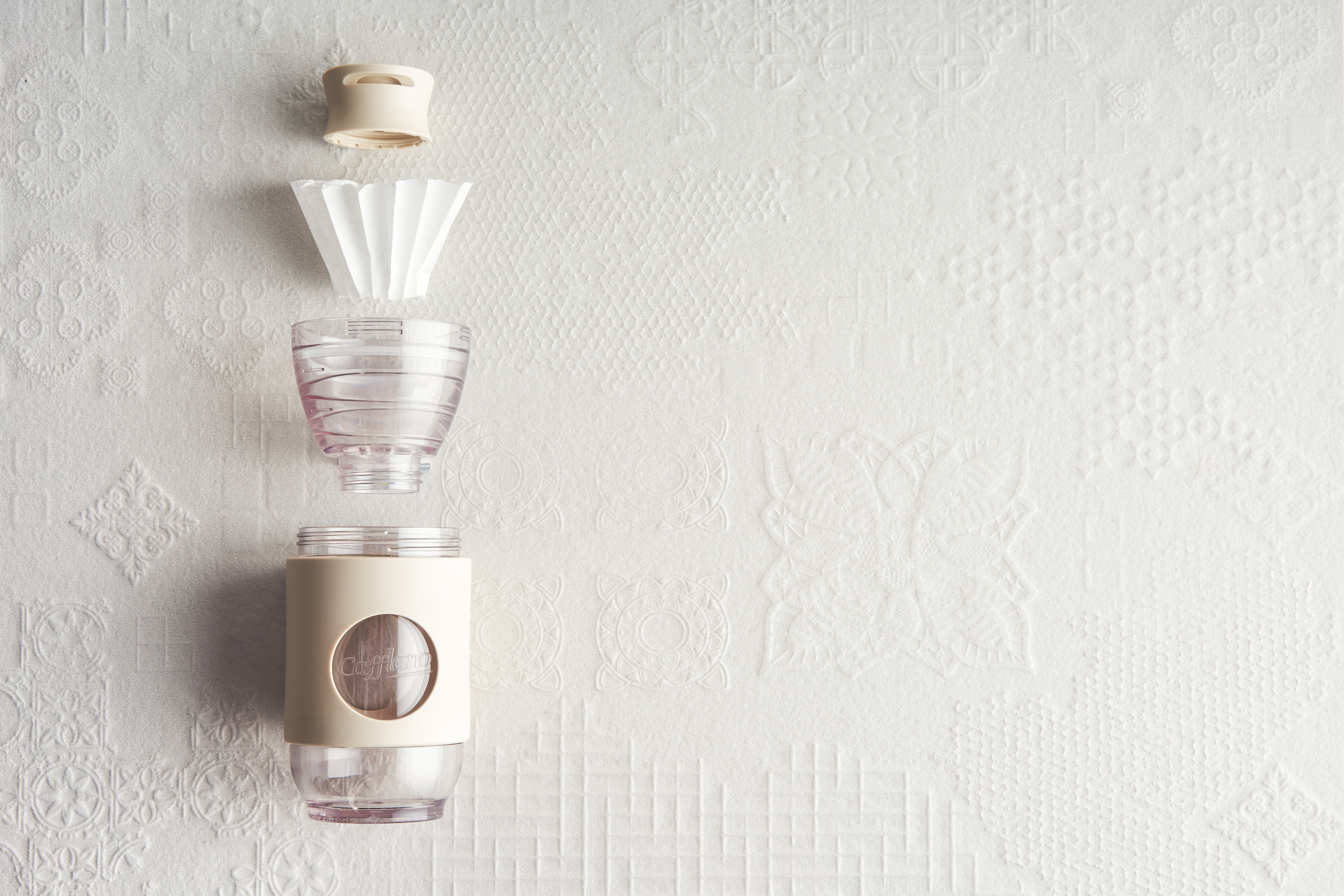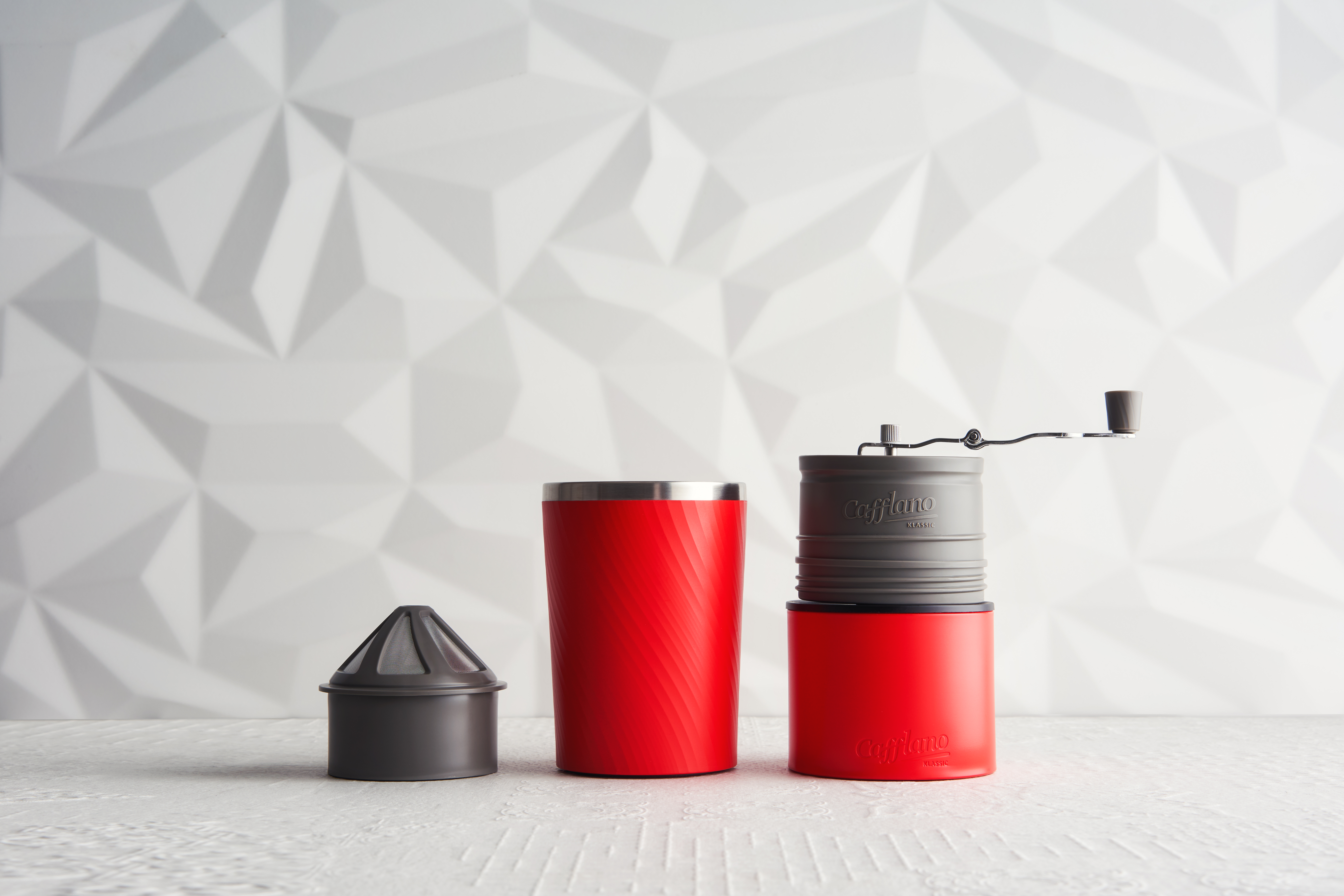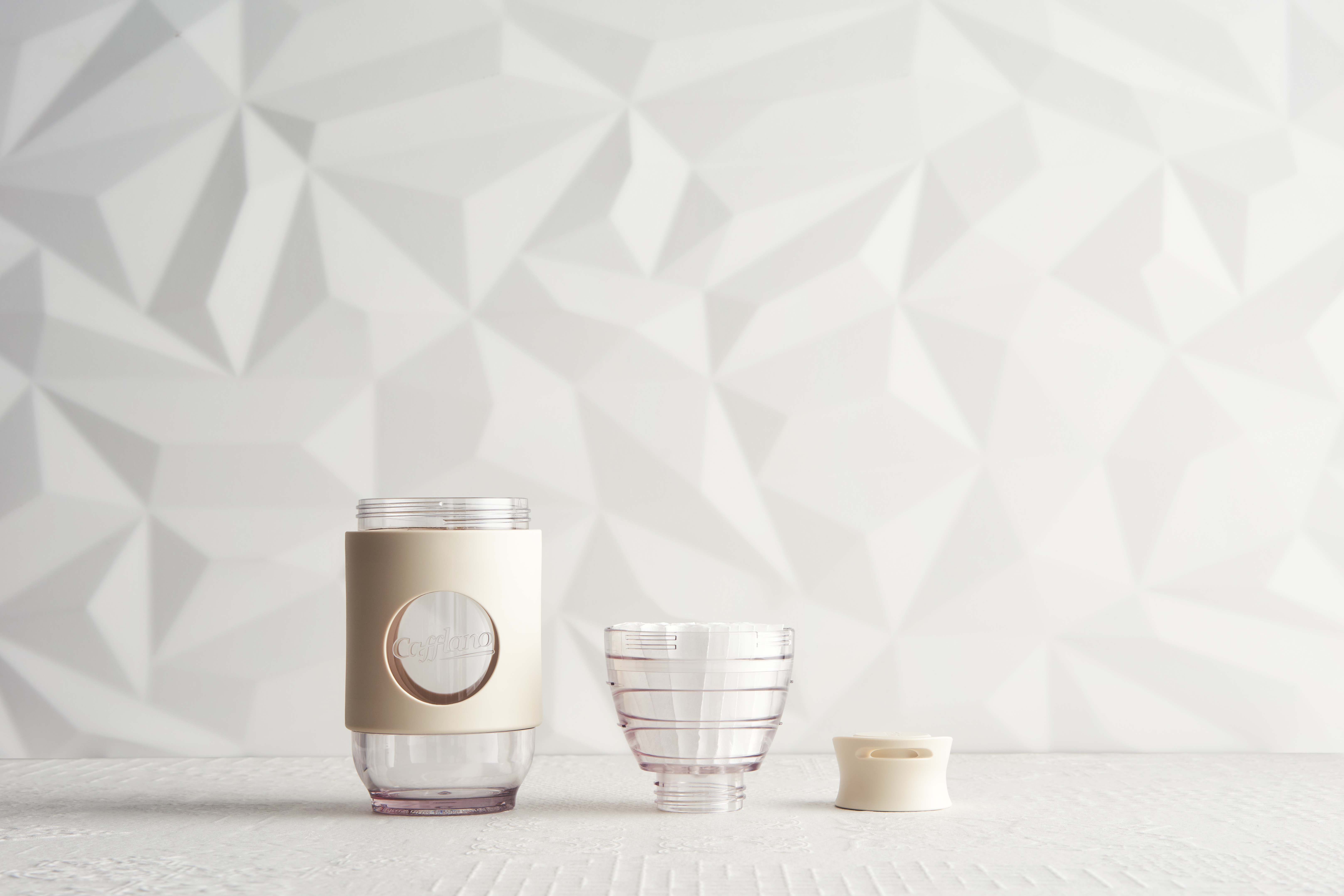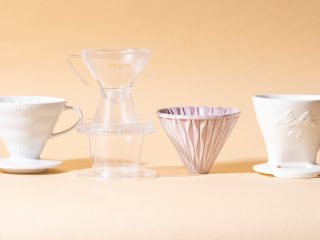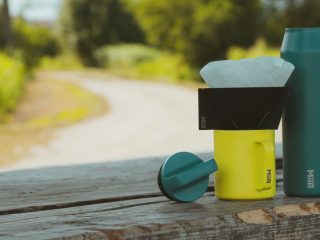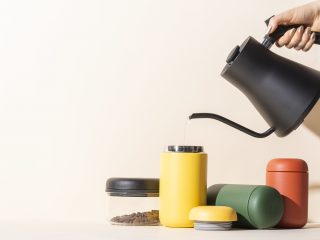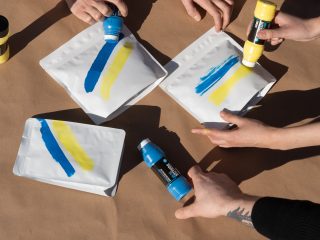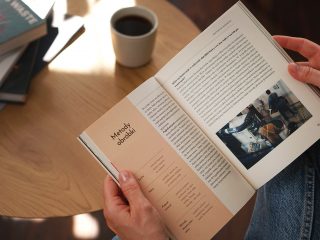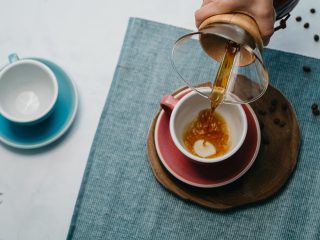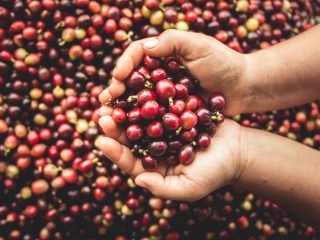We don’t always have the comfort of drinking our coffee at home or savouring it at a coffee shop. Sometimes you wish you could brew it somewhere on the run, during a short break at work or on a journey to the world’s end. This is why the solutions like the Cafflano Klassic and Go-Brew were created. They let you brew coffee literally everywhere and don’t take up much space in your luggage. What are the differences between the two and which solution is going to work for who?
All-in-one and (almost) all in one
The Cafflano hit the market in around 2015. This is when I got a Klassic model. Now I’ve been given the task to verify my notes and compare the first Cafflano model with the new invention – the Go-Brew. First, it is worthwhile noting how the South Korean company has developed. It now explores more and more the niche for brewing good coffee while travelling.
Most importantly – what are the differences between the Cafflano Klassic and the Cafflano Go-Brew? After all, both are used to make pour-over coffee. And yet, the differences are considerable.
Cafflano Klassic is an integrated combine for brewing coffee. In a steel cup with a screw cap, you will find a burr grinder, filter made from steel and plastic, pouring kettle and vessel for coffee. You have to admit that stuffing so many appliances into one is quite impressive. Especially, since it takes up only a little more space than a thermos in a pack.
Cafflano Go-Brew, on the other hand, reminds you of a reusable plastic bottle, trending nowadays at the gym. Here, we won’t find a built-in grinder, but a dripper using paper filters, which has considerable importance – I will speak about it in a minute. The Go-Brew model is certainly lighter than the Klassic version – it weights nearly 300 g compared to nearly 500 g. It also has a slightly smaller diameter. The two are almost identical in height.
Using the devices and brewing coffee
Both devices are very intuitive to use. Sure, you can read a manual, but even without doing so, you should get an idea about what is what.
Cafflano Klassic
After unscrewing the cap, which serves as a pouring kettle when you put the lid on, you can see the interior with a burr grinder right on top. The grinder can be easily adjusted by slightly unscrewing the screw at the top and setting the height of the threaded collar. The burrs are ceramic, like those used in basic models of manual grinders, such as the Porlex, the Rhinowares or the Hario. For this type of construction, they are quite well supported, but of course an ideal grind like in the Comandante Grinder won’t be the case here. For a travel option, however, the grind is good enough.
Right under the grinder, there is a reusable conical filter. What you need to do is pour the beans into the grinder, begin turning the handle (it is quite short with a small knob, so you are going to need some practice) and the coffee makes its way straight into the filter. A simple and perfect solution. Now all you need to do is unscrew the grinder, set it aside and pour hot water over the lid/pouring kettle. Do it the same way as with the V60, the Chemex or other pour-over methods. It’s supersimple. After a few minutes, under the filter, in the cup, the coffee is ready. You only need to take out the filter and begin savouring the brew some place at the end of the world.
The pouring kettle can hold up to 300 mL of water, which is an ideal portion for a cup of coffee (i.e. slightly under 300).
Cafflano Go-Brew
With this model, you need a separate grinder and flat-bottomed paper filters which are already part of the set. They have a slightly smaller diameter than, for example, the Gabi Master A, but I already checked it – they too will fit in. All you need to do is unscrew the cap and the neck of of the Go-Brew. Turn the neck upside down, place a filter inside it; it’s good to first pour some hot water over it to get rid of the paper taste. Next, pour in the coffee ground as for pour-over brewing methods, and begin pouring water. There is no built-in pouring kettle here, so you can either use the kettle in which you brewed water, or a canteen, which can be a little tricky. But for rangers, nothing is impossible or too scary.
An interesting fact: you can take off a sort of exterior collar surrounding the bottle and place your dripper on it. Thanks to that, we gain a few additional centimetres under the funnel and can fit more coffee into the device – instead of 270 ml mentioned in the manual, we can pour in 380 ml.
Effects
The differences in coffee flavour between the two appliances are quite marked. This is down to a few reasons, but most importantly using a different filtration method. A mesh coffee filter will always result in a higher body and heavier taste. The grinder can be the best in the world, but some finer particles landing in the brew will spoil the coffee’s clean flavour. On the other hand, many people who used to drink ground coffee beans mixed with water and switch to pour-over coffee will appreciate such flavour intensity.
The Go-Brew makes coffee definitely cleaner in taste. A paper filter retains much dust, like in the case of classic pour-over coffee from the V60 or the Chemex. Of course, you need to have access to a freestanding grinder, which can be both a very basic model and a top-quality Comandante… This too will have influence on the flavour of your coffee.
Where will they work best?
The Cafflano Klassic and the Cafflano Go-Brew have many differences. The question arises which functionality is most important to you – fitting almost all coffee accessories into one container or having a handy server/dripper/bottle.
The Klassic version will work when you have a break and want to brew coffee, for example for breakfast on a campsite or in the mountains, drinking the whole cup in one sitting. To drink the coffee, you need to set the grinder and the cone filter aside. The cup has no screw-on lid so it would be difficult to drink from it when walking. You can only cover it with the pouring kettle lid.
The Go-Brew requires a separate grinder and carrying with you the wave-style coffee filters that don’t like being crushed and deformed inside a backpack. On the other hand, having thrown away the used filter, you have just one portable device you can take with you and slowly sip coffee, screwing the lid on tight to your liking.
So it doesn’t make sense trying to determine which Cafflano device is better, since both are made for different types of travellers!


